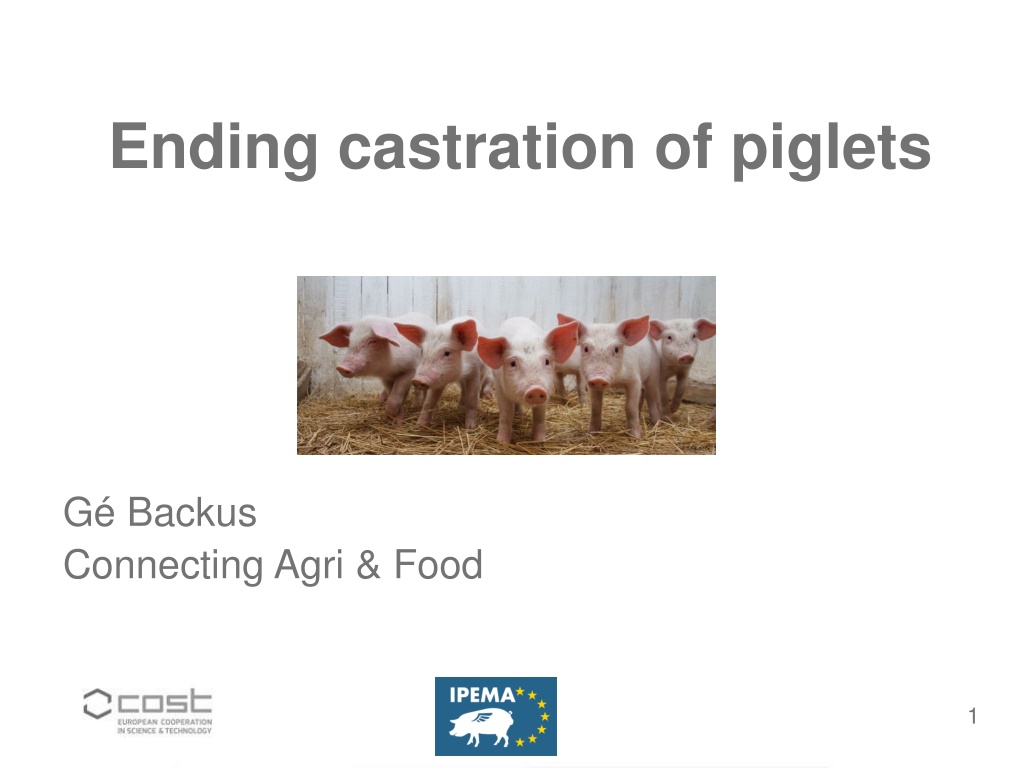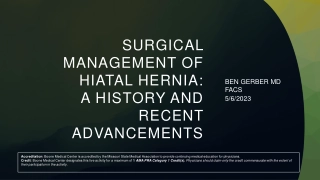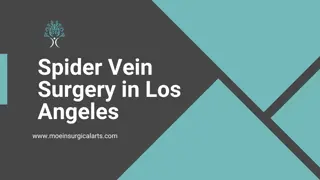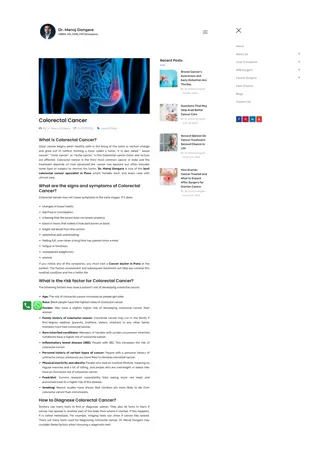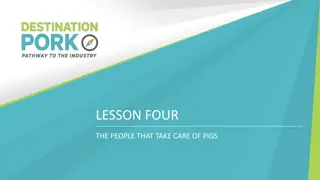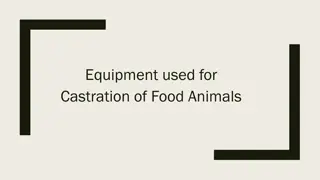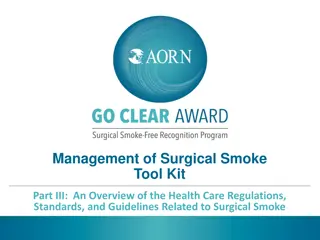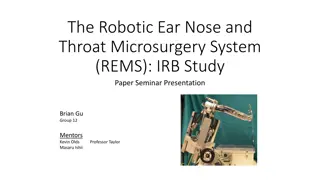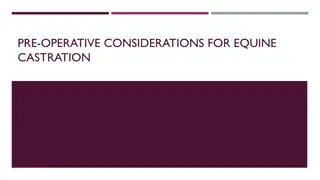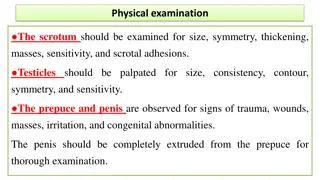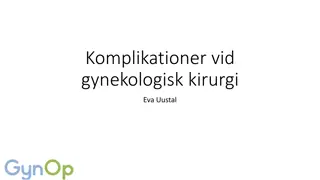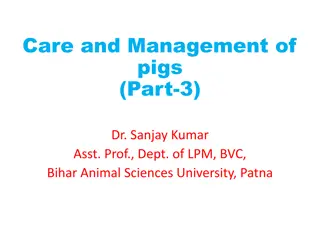Transitioning Away from Surgical Castration of Piglets in European Agriculture
Presentations and discussions from recent webinars highlighted the irreversible shift towards alternatives to surgical castration of male piglets in Europe. While challenges exist, including the need for market acceptance based on boar taint and fat quality, proactive measures such as genetics, feed, and vaccination are being explored. The search for an ideal anesthesia method continues, with international experts emphasizing the complexities and limitations of current options. Adapting husbandry practices for entire male pigs poses unique challenges, but strategies to address concerns such as taste, leanness, and meat quality are being developed to ensure consumer satisfaction.
Download Presentation

Please find below an Image/Link to download the presentation.
The content on the website is provided AS IS for your information and personal use only. It may not be sold, licensed, or shared on other websites without obtaining consent from the author. Download presentation by click this link. If you encounter any issues during the download, it is possible that the publisher has removed the file from their server.
E N D
Presentation Transcript
Ending castration of piglets G Backus Connecting Agri & Food 1
Setting the stage Results of IPEMA Webinar: Process of moving towards alternatives to surgical castration is irreversible, even if solutions applied in Europe differ. But there are no easy solutions, and not all markets are ready yet. Growing consensus, at least in Western Europe, that surgical castration of male piglets should be abandoned. Surgical castration with anesthesia and pain relief is not sustainable on a long-term in main stream production, although it might be a solution for the products that demand pigs of higher age and weight at slaughter. Fact-based solutions to the issues raised by entire male pig production and immunocastration, and covering the whole pork chain were shared by scientists from all over Europe during a webinar on 15thSeptember. Around 300 people from 30 countries attended this webinar. 2
We have learned that . Realizing market acceptance depends on boar taint and fat quality Consequent detection for boar taint as a safety net at the slaughter line is crucial Farm level management and housing system can play supportive role, but not replace detection With less backfat thickness some carcasses become too lean and less suitable (e.g. dry hams) And, fatty acid composition influences fat firmness For both boar taint and fat quality preventive measures are available (e.g. genetics and feed) Perceptions exist on vaccination and boar taint 3
No ideal anaesthesia method for castration In an expert meeting, international experts from Spain, Denmark, Sweden, Germany, Switzerland and The Netherlands concluded that so far, there is no ideal anesthesia/analgesia method. Report of a 1stmeeting: not be interpreted as a full scientific review of all methods. Discussion on anaesthesia/analgesia methods faced by limited scientific evidence and strong and varied stakeholder values and preferences. Methods of anaesthesia/analgesia are from local spray/gel anaesthetics to local anesthesia using lidocaine and inhalation anesthesia with isoflurane or CO2. So far, no method is ideal. All methods have their limitations. No method is outstanding on all relevant aspects. 4
Entire males Entire males do not behave like castrates and females Some farmers have learned how to adapt their husbandry practices Concerns about taste hamper consumer acceptability Carcasses of entire male pigs may also be too lean, which makes the processing of good quality dry-cured products difficult Incidence of boar taint and issues with intramuscular fat and fatty acid composition can be efficiently reduced with nutrition and genetics Still boar taint should be checked on the slaughterline Processing possibility to deal with tainted carcasses, provided there are few of them Selection goals to find a balance between feed efficiency and meat quality 5
Immunocastration With immunocastration performance is better than in castrates but lower than with entire males There are also less meat quality issues than with entire males The delay between 2nd immunisation and slaughter is an efficient tool to find one's own balance between performance and quality Consumer acceptability of immunocastration is good provided that evidence-based and science-based information is provided and received. This is however a challenge as consumers usually do not take the time for this. 6
Immunocastration in organic farming Immunocastration does interfere with natural process of sexual maturation But less so than surgical castration, because it is reversible The vaccine has no hormonal activity Stress during the vaccination procedure < Pain during surgical castration without pain relief Surgical castration with pain relief not stress free No indication of safety risk for the consumer 80% of consumers readily accept immunocastration when informed 7
Entire males and Immunocastration Successful adoption of the alternatives needs concerted action at all levels of the supply chain In order that efforts made at a given level are not nullyfied by lack of action at another level To agree on a compromise between performance and quality To share costs and benefits associated with the various alternatives in a fair way 8
Product specifications for the market Fat quality Lean carcasses should have >12 mm back fat thickness for marketing dry hams Bellies should have <15% poly unsaturated fatty acids (PUFA), and Iodine value < 70 Boar taint prevalence Sufficiently low percentages (2-3%) enable masking strategies to be an effective tool Farmers will be induced to implement effective genetics and feeding measures, with appropriate incentives and an equitable distribution of costs and returns. This is difficult for non-integrated supply chains. 9
Practical solutions Entire male pigs housed separately from female pigs, in stable groups with sufficient provision of space in structured pens, with sufficient natural enrichment materials to explore. Feeding pigs with adjusted diets will often solve fat quality problem. But this will not be enough for systems targeted to dry-cured products. Increasing intramuscular fat content by selective breeding or nutrition is advisable and will contribute to alleviate the toughness issue. Selection, nutrition and management strategies help to reduce the incidence of boar taint at farm level. Meat that is less suitable for fresh meat consumption due to unusual odour can to a certain extent be sustainably used in processed products provided that appropriate measures are taken. 10
Remaining issues Intrinsic quality Outdoor housing provides higher risk of boar taint prevalence Additional to focus on feed efficiency, incentives on fat quality are needed Extrinsic quality Perception by market actors in third (Asian) markets Consumer perceptions i.r.t. vaccination 11
Concluding comments Ending piglet castration long-term and complex process, Unraveling reactions consumers on meat from non-castrated pigs Only supply chain wide solutions will really work Pork supply chains better and better equipped to become successful Still some open ends Potential of available knowledge not fully utilized Role of feeding as a direction for solution not enough in the picture FINAL MESSAGE: Objectivity and fact based working are key factors 12
